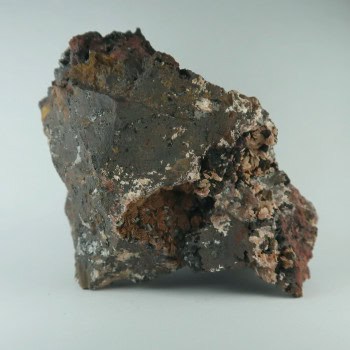Hematite
Hematite is a browny-red ore, containing a high percentage of Iron. While its primary use is as an ore, it is often sold cut and polished – its low price makes it quite attractive to stone cutters, and the mirror shine they can give it appeals to many.
One of the more common decorative uses is for jewellery, where it is typically cut en cabochon, or has designs engraved into it, known as intaglio.
It is worth pointing out that there is a synthetic material similar to Hematite, sometimes missold, or sometimes referred to as ‘Hematine’ or ‘Hemalyke’. This material is manmade, and often magnetic or given a rainbow coating.
Showing all 12 results
-
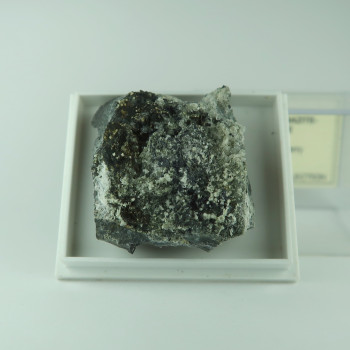
Calcite, Chabazite, and Hematite from Coatsgate Quarry, Scotland
£10.00 -
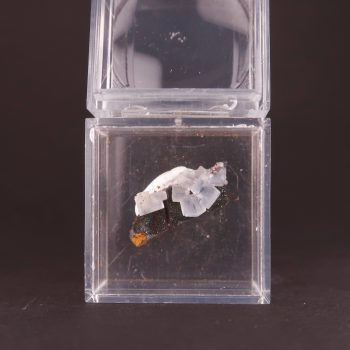
Fluorite and Specularite from Ullcoats Mine, Cumbria
£5.00 -

Hemalyke Cabochons
Price range: £1.00 through £5.50 -
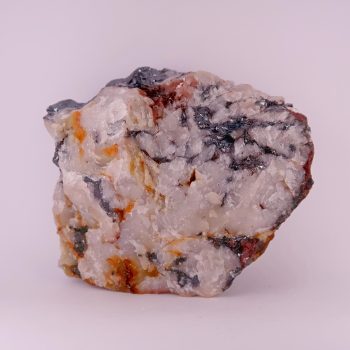
Hematite and Pseudomalachite from Bampfylde Mine, Devon
£30.00 -
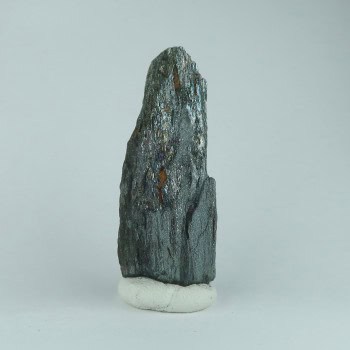
Hematite from Andrade mine, Brazil
£5.00 -
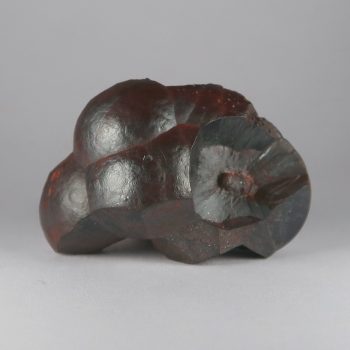
Hematite from Goose Green Mine, Cumbria
£15.00 -
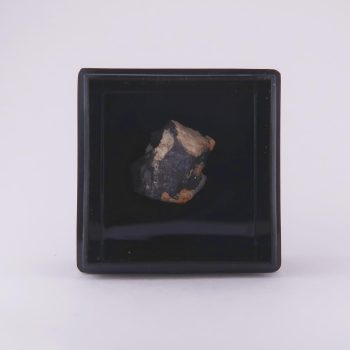
Hematite from Sterling Mine, USA
£2.00 -
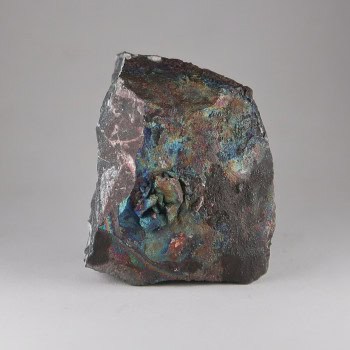
Iridescent Hematite from Hat lease, USA
£10.00 -
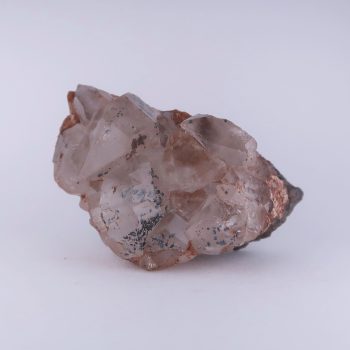
Quartz with specularite inclusions from Crowgarth Mine, Cumbria
£35.00 -
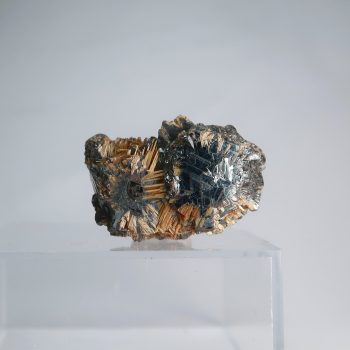
Rutile in Hematite specimens
Price range: £5.00 through £10.00 -
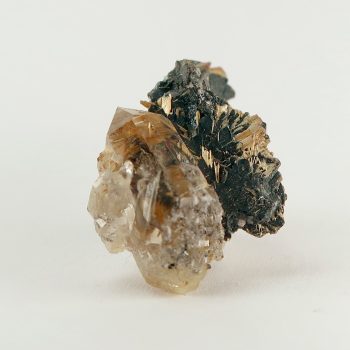
Rutile, Hematite, and Rutilated Quartz from Novo Horizonte, Brazil
£250.00
Appearance
A grey-silver ‘gunmetal’ coloured metallic ore.
Uses and History
Hematite is one of the oldest known minerals, having been originally named in around 300BCE by the Ancient Greeks. It was then renamed to ‘haematites’ by Pliny the Elder in 79CE, meaning ‘blood like’. The modern form was then simplified to ‘hematite’.
Hematite has a storied history and has been used for many different purposes. The most important use is, of course, as an ore of Iron!
It has been used to make a reddy-brown pigment since antiquity, both as part of red Ochre and red Chalk. It has also been used for jewellery making – particularly Victorian era intaglio carvings and mourning jewellery. However, most modern Hematite used in jewellery is synthetic.
Locales
It is extremely difficult to list the locales for Hematite, as it is one of the most common minerals on Earth.
Significant deposits are found in Australian, North America, Guinea, Brazil, Republic of the Congo, South Africa, and Venezuela.
Mineralogy
Hematite can vary quite wildly in colour, depending on the form it takes.
Hematite is often a gunmetal grey to black, but fine grained specimens can be an earthy, clay like red colour. Some can even display rainbow colours.
Kidney Ore
Kidney Ore is a colloquial name given to botryoidal Hematite, as sometimes it has a similar appearance to a Kidney.
Rainbow Hematite
Rainbow Hematite can be a little confusing. There are two types – one synthetic, one natural. The natural mineral is referred to as Turgite – the synthetic is always referred to as rainbow Hematite.
The synthetic material is almost certainly another form of ‘Hemalyke’.
Specularite
Specularite is a variant with tabular crystals, or sparkling flakes of Hematite.
Hemalyke/Hematine/Magnetic Hematite
There is a synthetic, man made material sold as Hematite, Hemalyke, or Hematine. This is often used for jewellery making, or tumbled – it is often sold in gift shops. It can be given a rainbow coating, too, and can look similar to heat treated Titanium.
This material is simply a synthetic form of ferrite magnet, usually with quite strong magnetism. This material should streak test with a dark brown or grey colour.
Magnetism: Most people would immediately jump to using a magnet to test an item being made of Iron – but Hematite is not always magnetic, and is not often highly magnetic. A synthetic form of Hematite does exist, and this is strongly magnetic. This synthetic material is referred to as Hemalyke or Hematine.
Hardness Testing: The Mohs hardness test is a tricky test for certain Hematite specimens – especially Specular pieces, as they can be prone to crumbling.
Streak Test: The ideal diagnostic test for Hematite is a streak test. Genuine Hematite will streak red to reddish brown.
Hazards and Warnings
Excess consumption of Iron can cause quite a lot of organ problems. This is often more likely to be associated with soluble Iron salts, such as Iron tablets, but it could easily be linked to mining, arc welding, metalworking, and polishing with red rouge without proper ventilation. Repeated exposures can cause metal fume fever or siderosis.
Almost all rocks, minerals (and, frankly, almost all other substances on earth) can produce toxic dust when cutting, which can cause serious respiratory conditions including silicosis.
When cutting or polishing rocks, minerals, shells, etc, all work should be done wet to minimise the dust, and a suitable respirator or extraction system should be used.
Translations
Arabic:
- الهيماتيت
Hindi:
- हेमेटाइट
Portuguese:
- hematita
Bengali:
- মূল্যবান্ আকরিক লৌহবিশেষ
Indonesian:
- bijih besi
Punjabi:
- ਹੇਮੇਟਾਈਟ
English:
- Haematite
- Hematite
Italian:
- Ematite
- Oligisto
Russian:
- Гематит
French:
- Hématite
- Fer oligiste
- Rot Eisenerz
- Roteisenstein
Japanese:
- 赤鉄鉱
Spanish:
- Hierro oligisto
German:
- Hämatit
- Eisenglanz
Korean:
- 적철광
Thai:
- แร่เหล็กสีนำ้ตาล
Gujurati:
- હિમેટાઇટ
Mandarin Chinese:
- 赤鐵礦
- 赤铁矿
Urdu:

